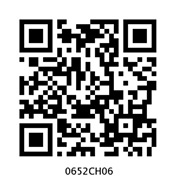Table of Contents
6
Changes Around us
What a fun would it be if you suddenly get some magical powers to change things around you. What are the things you would want to change?

We do not have magical powers, of course. But, we can still change a few things around us, perhaps many things. Can you list a few things you can change around you, with no magic involved?
Many changes are taking place around us on their own. In the fields, the crops change from time to time. Sometimes, leaves fall from trees, change colour and dry out. The flowers bloom and then wither away. Are any changes happening in your body? Your nails grow, your hair grows, you grow taller and your weight increases as you grow. Did you realise earlier that so many changes are taking place around you all the time?
Can some of the changes be grouped together?
How can we group various changes? It might help, if we find some similarities between them.
6.1 Can All Changes Always Be Reversed?
Activity 1
Take a balloon and blow it. Take care that it does not burst. The shape and size of the balloon have changed (Fig. 6.1). Now, let the air escape the balloon.
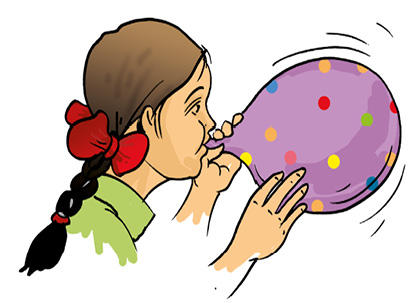
Fig 6.1 A balloon changes its size and shape on blowing air into it
Activity 2
Take a piece of paper and fold it as shown in Fig.6.2. You have changed the sheet of paper into a toy aeroplane. You may have lots of fun in flying this plane. Once you are tired of it, unfold the paper again.
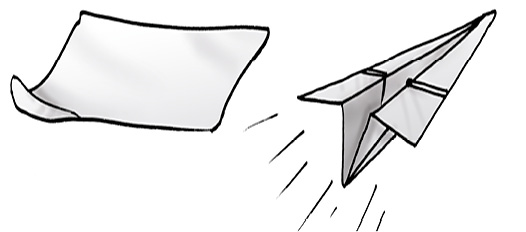
Fig 6.2 A toy aeroplane made by folding paper
Activity 3
Take some dough and make a ball. Try to roll out a roti (Fig. 6.3). May be you are not happy with its shape and wish to change it back into a ball of dough again.

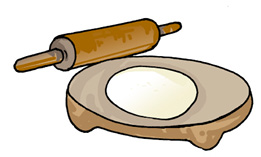
Fig 6.3 A ball of dough and a rolled out roti
Now, think about the three changes you observed in Activity 1, 2 and 3. What do they have in common?
Was it possible to get the balloon back to its original shape and size?
Was the size of the paper same as before and after making an aeroplane?
Was it possible to get back the ball of dough again?
What do you conclude? In each of the three activities, is it possible to get back to the material with which we started our activity? If the answer is yes, it means that the changes occurring in these activities can be reversed. Now, let us repeat the same activities with a difference.
Activity 4
Take the same balloon, which you used in Activity 1. Blow it to its full size and tie its mouth with a string tightly. Prick it with the pointed tip of your pencil. Oops! It burst.
Activity 5
Take the same piece of paper, which you used in Activity 2. Draw an aeroplane on it and cut along its outline (Fig.6.4).
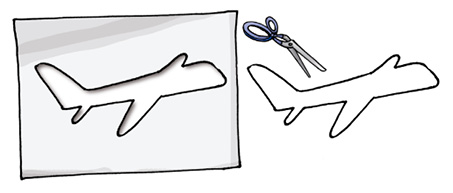
Fig. 6.4 An aeroplane cut out of paper
Activity 6
Roll out a roti from the ball of dough again and bake it on a tawa (Fig.6.5).

Fig 6.5 A roti
Suppose, you are asked the same three questions which you answered after Activity 3. What would your answers be, now?
We see that, the changes which have occurred in the Activity 4, 5 and 6 can not be reversed.
You use a pencil and an eraser. With repeated use, their shape and size change. Can we reverse this change?
You must have seen a potter working on his wheel. He shapes a lump of clay into a pot. Can this change be reversed? He then bakes the pot in an oven. Now, can this change be reversed?
Some common changes are given in Table 6.1. Which of these changes, do you think can be reversed?
Table 6.1 Some common changes![1067.png]()
We find that one way we can group changes is to see if they can be reversed.
6.2 Could There be Other Ways to Bring a Change?
We all have seen the tools which are used to dig the soil (Fig. 6.6 ). Have you ever seen how the iron blade in these tools is fixed to the wooden handle?
The iron blade of these tools has a ring in which the wooden handle is fixed. Normally, the ring is slightly smaller in size than the wooden handle. To fix the handle, the ring is heated and it becomes slightly larger in size (expands). Now, the handle easily fits into the ring. When the ring cools down it contracts and fits tightly on to
the handle.
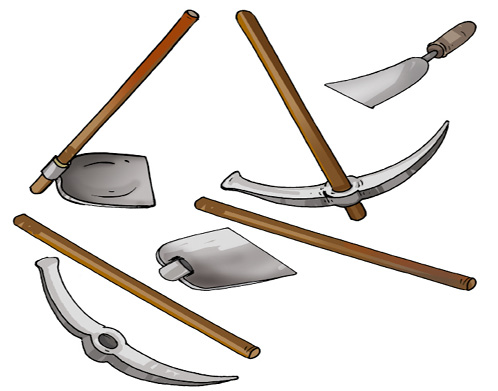
Fig. 6.6 Tools are often heated before fixing wooden handles
Such a change is also used for fixing the metal rim on a wooden wheel of a cart as shown in Fig.6.7. Again the metal rim is made slightly smaller than the wooden wheel. On heating, the rim expands and fits onto the wheel. Cold water is then poured over the rim, which contracts and fits tightly onto the wheel.
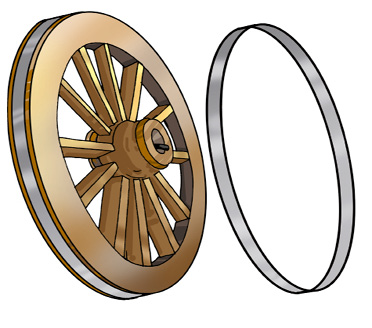
Fig. 6.7 Cart wheel with metal rim fixed to it
When we heat water in a pan, it begins to boil after some time. If we continue to heat further, the quantity of water in the pan begins to decrease.
The water changes into its vapour. In Activity 7, Chapter 5 you have observed that water vapour gets changed into liquid water when it is cooled. We all have noticed melting of ice. Ice melts when it is heated. What does it change into? Is it possible to change this water back into ice?
Let us observe some more changes.


Activity 7
Take a small candle and measure its length with a scale. Now, fix it at a suitable place and light it. Let it burn for some time. Now blow out the candle and measure its length again (Fig.6.8).
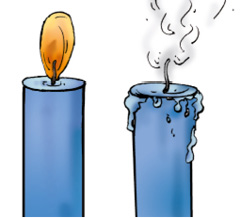
Fig.6.8 Burning of a candle
Can the change in the length of the candle be reversed? If we were to take some wax in a pan and heat it, can this change be reversed (Fig. 6.9)?

Fig.6.9 Heating wax
Repeat Activity 7 with an incense stick. Wait till it burns away completely. What are the changes that occur in the incense stick? The stick burns to produce some new material. These are ash and some gases. We cannot see these gases but can sense them due to their pleasant smell. Can this change be reversed? And what about the change, which occurred in the matchstick you used for lighting the candle or incense stick?
So far we have discussed the changes occurring in a given object or its material. What about the changes that occur when two substances are mixed together?
In Chapter 4, we dissolved salt in water. Do you think a change occured in salt or in water? Is it possible to reverse this change? Wait, in Chapter 5, we learnt how to separate salt from its solution in water. So, can we say that the change due to dissolving salt in water be reversed?
Paheli asks if you have ever seen curd being set. A small quantity of curd is added to warm milk. The milk is stirred and is set aside for a few hours at a warm place. In a few hours, the milk changes into curd. Can this change be reversed?
We find that a few ways to bring about a change in a substance could be, by heating it or by mixing it with some other substance. We also find that some changes can be reversed, while some others cannot be reversed. There must be many other ways of changing things around us. It is possible that some of them could be reversed. Thus, changes around us could be grouped as those that can be reversed or cannot be reversed. In higher classes, you will learn more about the ways in which changes can be made and the way these can be grouped.
KeyWords
Changes

Contraction
Evaporation
Expansion
Melting
Summary
- Some changes can be reversed and some cannot be reversed.
- A change may occur by heating a substance or by mixing it with some other.
Exercises
1. To walk through a waterlogged area, you usually shorten the length of your dress by folding it. Can this change be reversed?
2. You accidentally dropped your favourite toy and broke it. This is a change you did not want. Can this change be reversed?
3. Some changes are listed in the following table. For each change, write in the blank column, whether the change can be reversed or not.
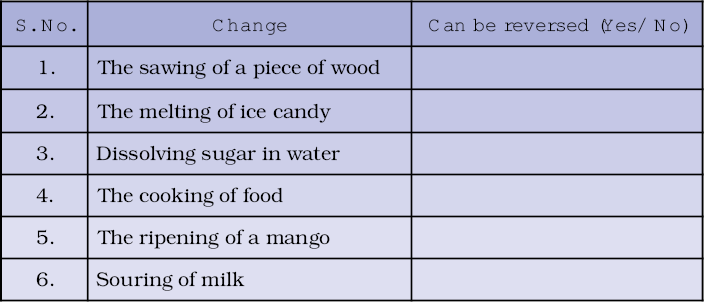
4. A drawing sheet changes when you draw a picture on it. Can you reverse this change?
5. Give examples to explain the difference between changes that can or cannot be reversed.
6. A thick coating of a paste of Plaster of Paris (POP) is applied over the bandage on a fractured bone. It becomes hard on drying to keep the fractured bone immobilised. Can the change in POP be reversed?
7. A bag of cement lying in the open gets wet due to rain during the night. The next day the sun shines brightly. Do you think the changes, which have occurred in the cement, could be reversed?
SUGGESTED PROJECTS AND ACTIVITIES
1. Take a lemon, a paintbrush and a piece of paper. Cut the lemon and squeeze out its juice in a cup. Dip the brush in the lemon juice and write a message on the paper. Let the paper dry and you find that the letters of your message become invisible. Now, press the paper with hot iron or warm it by holding it above the flame of a candle (Take care that it does not catch fire). As the paper gets warm, invisible letters change into dark brown colour. Identify the changes that can be reversed in this process.
2. Observe preparation of dishes at your home. Identify two changes that can be reversed.
3. Maintain a record for one year of the seasonal changes in vegetables, clothing, nature and events around you. Identify the changes that can or cannot be reversed.
